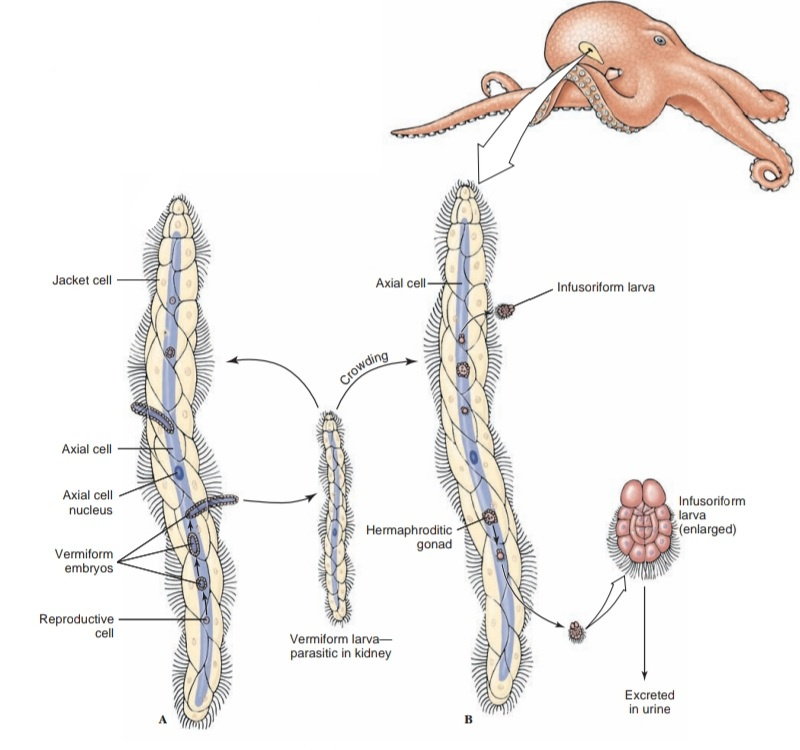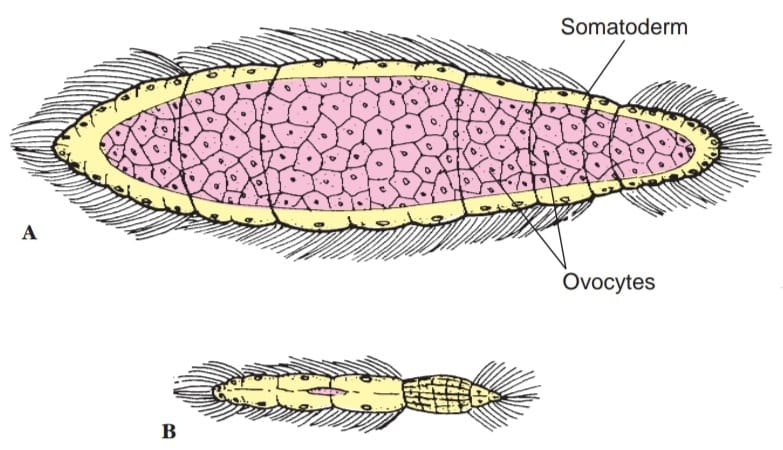The name Mesozoa (mes-o-zo -a) (Gr. mesos, in the middle+ zoon, animal) was coined by an early investigator (vanBeneden, 1876) who considered the group a “missing link”between protozoa and metazoa. These minute, ciliated, wormlike animals represent an extremely simple level of organization. All mesozoans live as parasites or symbionts in marine invertebrates, and the majority of them are only 0.5 to 7 mm in length. composed of only 20 to 30 cells arranged basically in two layers. The layers are not homologous to the germ layers of other metazoans.
The two classes of mesozoans, Rhombozoa and Orthonectida, differ so much from each other that some authorities place them in separate phyla. Rhombozoans (Gr. rhombos, a spinning top, + zoon, animal) live in kidneys of benthic cephalopods (bottom-dwelling octopuses, cuttlefishes, and squids) where they apparently cause no harm to the host. Adults, called vermiforms (ornematogens), are long and slender Their inner, reproductive cells give rise to vermiform larvae that grow andthen reproduce. When a population becomes crowded, reproductive cells of some adults develop into gonadlike structures producing male and female gametes. Zygotes grow into minute (0.04 mm) ciliatedinfusoriform larvae, quite unlike the parent. These larvae are shed with host urine into the seawater. The next part of the life cycle is unknown because infusoriform larvae are not immediately infective to a new host.

Orthonectids (Gr. orthos, straight, + nektos, swimming) parasitize a variety of invertebrates, such as brittle stars, bivalve molluscs, polychaetes, and nemerteans. Their life cycles involve sexual and asexual phases, and the asexual stage is quite different from that of rhombozoans. It consists of a multinucleated mass called a plasmodium, which by division ultimately gives rise to males and females.

There is still much to learn about these mysterious little parasites, but probably one of the most intriguing questions is the place of mesozoans in the evolutionary picture. Some investigators consider them primitive or degenerate flatworms and even place them in phylum Platyhelminthes. Present molecular evidence groups mesozoans with flatworms in superphylum Lophotrochozoa. However, a molecular phylogeny that included an orthonectid and two species from a rhombozoan subgroup, the dicyemids, did not show members of the two classes to be sister taxa, so the phylum may not be monophyletic.
Useful External Links


